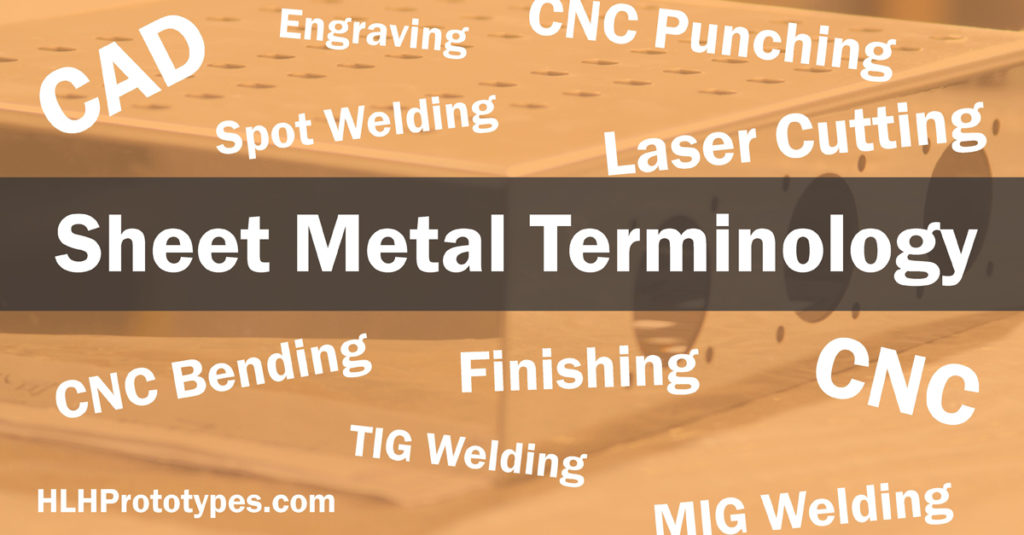Sheet Metal Terminology

December 18, 2018
If you are looking at fabricating parts out of sheet metal then it helps to know the terminology.
Below are some common phrases with quick definitions that will assist you as you are designing your parts for sheet metal fabrication and sourcing reliable manufacturing partner.
CNC: stands for Computer Numerical Control. This means a computer converts the design you created with CAD software into numbers. The numbers work as coordinates, that tell a CNC machine how to make your part, that matches your CAD drawing.
CAD: stands for Computer Aided Design. Software that you use to design and build a 3D CAD file. A 3D CAD file is all we need to quote and get started on your project. FreeQuote@HLHPrototypes.com
CNC Bending: is when a bend machine cleanly bends (without breaking) a sheet of metal to form a specific shape.
Laser Cutting: Your CAD drawing is programmed into a laser cutting machine, that uses optical lasers to very accurately cut a piece of metal. Because of the high accuracy, this is a great way to cut very small, minute detail into a piece of steel.
CNC Punching: is stamping holes, slots or shapes into a piece of metal using powerful presses to punch through metal, to match your CAD drawing.
Engraving: refers to etching a detailed pattern into metal without punch through the other side. Widely used for a quality look and feel for logo and text design. Depth of engraving can vary to suit desired aesthetic look.
Sheet Metal Fabrication: is a term that may encompass rolling, bending, assembly, welding, insertion…any sheet metal work term that helps to bring your CAD drawing to life.
Finishing: are the surface finish options available on your sheet metal part. Common options used are Powder Coating, Polishing, Painting, Sand Blasting and Sand Buffering.
Welding: is a term that is defined as a process where at least two pieces or metal are placed together, then fused/melted together using heat to create a solid joint. This process can be achieved with or without a filler material depending on the technique being used.
Tig Welding: is Tungsten Inert Gas Welding. This process uses a non-consumable Tungsten electrode to produce a weld joint. Good option for thin weld joints that require precision control.
MIG Welding: is Metal Inert Gas Welding that uses a consumable, like a metal wire to join metal pieces together. Can be a good option for long, continuous weld joints.
Spot Welding: uses an electric current to create a spot weld, a small weld point that joins two pieces of metal together forming small, separate weld joints.
Check out a video showing some of our sheet metal capabilities here.
FreeQuote@HLHPrototypes.com to start your project review today 🙂
